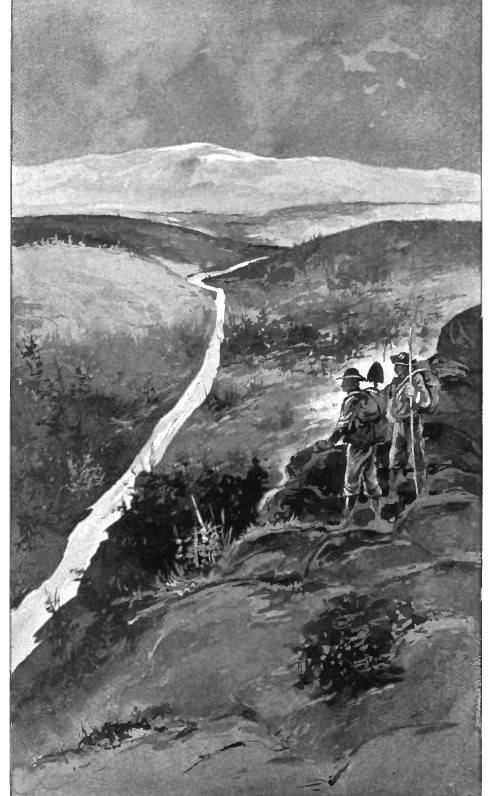Gold seems to have always exerted a magnetic influence on mankind. Its power of fascination was felt as much in the "dark backward chasm of time" as it is in these days of higher civilization. King Solomon was as noted for his store of gold as for his wisdom, but long before that astute monarch reigned the yellow metal was highly prized and used extensively in primitive arts and manufactures. The earliest known coinage of gold was about 800 years B.C. in the time of Miletus – it was made of electrum – a natural gold and silver alloy. Four centuries later, it is recorded, the Sicilians used gold for coinage purposes. In the earlier centuries of the Christian era placer mining was well established in Southwestern Europe, the Ural Mountains and Asia Minor. We have nothing authentic, however, in the way of statistics of gold mining previous to the great gold rush discoveries of North and South America, but since then the world's annual production of gold is pretty well known. The big gold discoveries of the 1800s began in California in 1847, in Australia in 1851 and in British Columbia a few years later. Then came the strikes in Queensland and New South Wales, followed by those in the Transvaal in 1868, and the Witwatersrand in 1886. Back then there were frequent strikes, not only in South Africa, but in many of the US Western States. The opening up of Cripple Creek, whose output in 1900 was in the neighborhood of 1.5 million ounces was one of the marvels of those times. There were also the great placer finds of Alaska and the Klondike, that amazed and fired up the imagination.
World Famous
Placer Gold Mining Regions:
1.
Gold Deposits of California, Part I
2. Gold Deposits of California, Part II
3.
The Gold Bearing Gravels of The Sierra Nevada
4. Hard Rock Gold Deposits of Nevada
5.
Gold Placers Of Alaska
6. Yukon Territory Placer Deposits
7. Placer Gold Mining Districts Of British Columbia
8. Gold Deposits of Victoria, Australia
9. The Bendigo Goldfield Of Victoria
10. The Alluvial Deposits of Western Australia, Part I
11.
The Alluvial Deposits of Western Australia, Part II
12. The Alluvial Deposits of Western Australia, Part III
13.
The Alluvial Deposits of Western Australia, Part IV
14. The Alluvial Deposits of Western Australia, Part V
15.
The Alluvial Deposits of Western Australia, Part VI
16.
RUSSIA: The Ural Gold Fields
17. The Witwatersrand Gold Deposits of South Africa
Gold mining has made rapid strides during the two hundred years. Not only has the enormous wealth of astonished the world, but it has led to the exploration and development of the rich gold fields of Alaska, Russia, Nevada, Australia, California, British Columbia, South Africa, Yukon-Klondike and other mining sections of this planet. These great strikes have revealed the widespread nature of our world’s vast storehouses of the yellow metal. Nearly every great gold district has its stories of great strikes and immense outputs. There are many great tales of wonderful pannings, of splendid mill runs, of the discovery of pockets and gold nuggets that bid to rival the grand finds of the golden days of California and Australia.
In all of these great discoveries, often it was the placers that were found first. Deposits of gold bearing alluvial gravels are termed placers, alluvial drifts, or more simply, "alluvials." The first term is of Spanish origin, and is used mainly in America; the two latter are more current in Australia. Worldwide, they have therefore, furnished a very large proportion of the our planet's gold supply, and for the same reason are the earliest of the gold deposits worked by our ancestors. The simplicity of places is also why they were discovered by pre-historic man and are the reason that gold was man's first metal. Their natural gold is generally readily accessible to the individual miner, and is often easily recovered by the simplest of means, and with minimal capital investment. Their richness, in California, Victoria, New Zealand, and the Klondike, has at times been quite extraordinary. Often in Victoria yields of 250 ounces gold per bucket of gravel have been obtained.
These great placers form an important source of supply of gold, together with a little silver, much of which is never separated from the ore in which it occurs. Gold placers, although widely distributed, become prominent chiefly in those areas in which auriferous quartz veins and other gold deposits are abundant. The gold bearing gravels are derived chiefly from quartz veins of Mesozoic age in the Pacific coast region, and to a less extent from pre-Cambrian veins of the Appalachian region and Black Hills of South Dakota. Some are also derived from veins in Tertiary lavas, but these usually contain the metals in such a finely divided condition, or in such combination, that they do not readily accumulate in stream channels (as in the Carlin type deposits of Nevada). Historically, large quantities of placer gold were obtained from Alaska and California. Even so, placer deposits are widely dispersed across North America where they are found in many parts of the Cordilleran region, the Black Hills, and southern Appalachian region of the United States, with their greatest development is in the Pacific Coast belt from California to Alaska, and in the Yukon district of Canada. Other gold placers of worldwide importance are found in Ural Mountians of Russia, South America and Australia. Most of the world’s gold placers are of Tertiary or Quaternary age, but older ones are also known. Water makes placer deposits easier to work, and taking into consideration all sources, we see that the most placer gold was obtained by dredging, drift-mining from buried channels, hydraulicking, and sluicing. However its is also important to note that as well that significant amounts of gold have come from dry placers in Australia, Arizona and other dry regions, as well as beach gravels in places like New Zealand, Alaska, California and Oregon.

